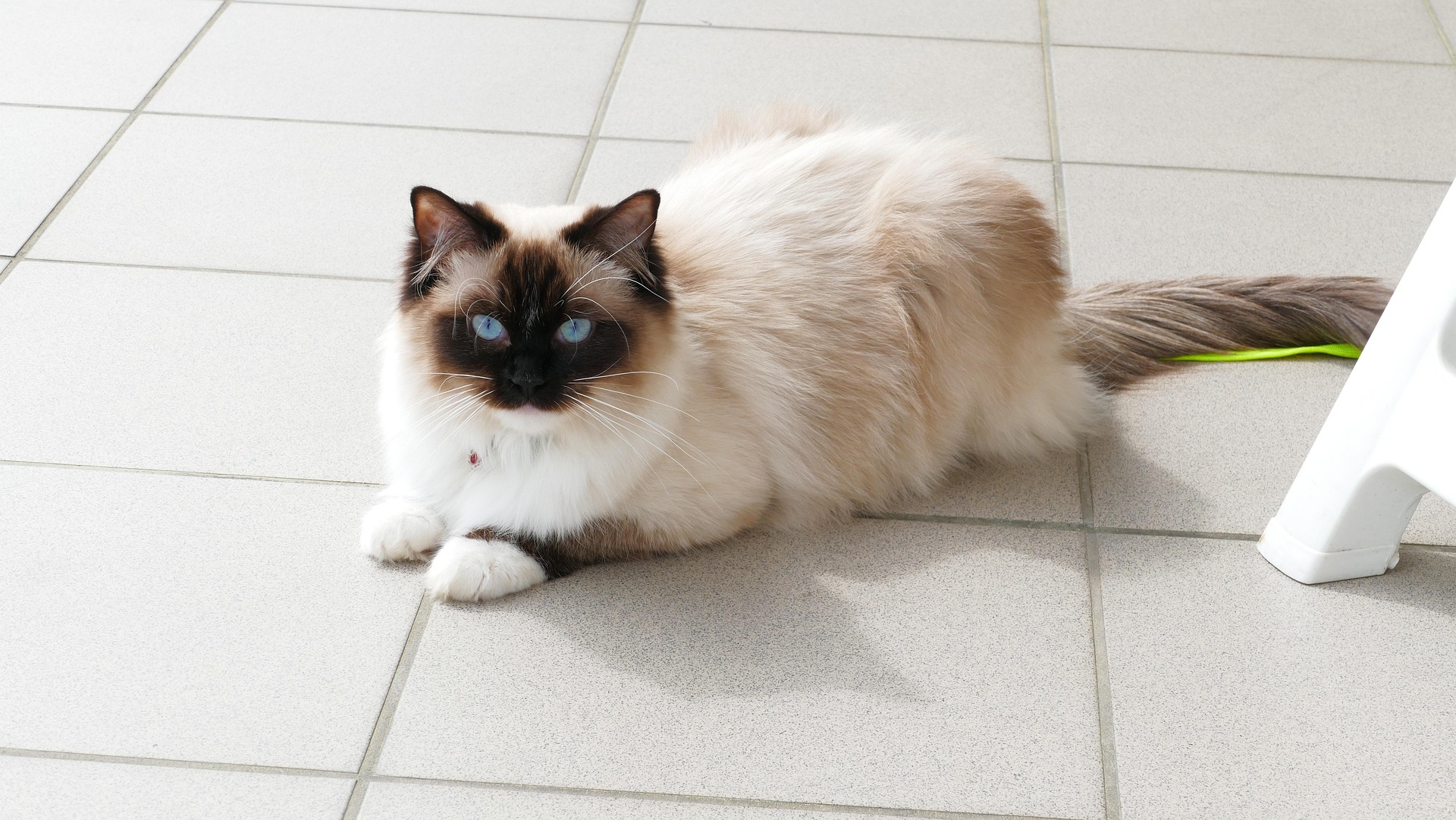If you’ve ever stood by the door while your Ragdoll gazes longingly at the world beyond, you’re not alone. Many owners wonder the same thing: Is it really safe to let a Ragdoll outside, or is life indoors the better choice?
Unlike street-smart tabbies, Ragdolls are gentle, trusting, and don’t have strong survival instincts. They’re more likely to freeze than flee when faced with danger, which makes traffic, predators, and even loud noises real risks.
Before you decide, ask yourself:
- Is my area busy with traffic or wildlife?
- Is my Ragdoll microchipped?
- Can I supervise outdoor time?
This guide covers the realities, risks, and safe alternatives—so you can choose what keeps your Ragdoll happiest and safest.
Why Many Experts Recommend Keeping Ragdolls Indoors
While all cats face risks outside, Ragdolls are especially vulnerable because of their trusting nature, slow reflexes, and lack of street smarts. Experts warn that outdoor life can easily shorten their lifespan and expose them to dangers they’re simply not built to handle. Think traffic — a sudden horn and they freeze instead of running.
Predators or aggressive animals — they’re friendly to a fault, making them easy targets. Even theft — their beauty and rarity can attract the wrong kind of attention.
There are also diseases and parasites, such as FeLV and FIV, as well as everyday toxins like antifreeze and pesticides.
Add breed-specific issues, such as heart disease, sensitive digestion, and stress that weakens their immunity, and the case for keeping them indoors becomes clear. Keeping them inside isn’t cruel — it’s love in disguise.
Recommended Post
Can Ragdoll Cats Ever Go Outside Safely?
Yes — but only under strict, controlled conditions. Ragdolls can enjoy fresh air through supervised time in a secure garden, on a leash and harness, or inside an enclosed catio or portable playpen.
Start indoors, keep sessions short and calm, and use a padded, escape-proof harness — they’re clever wigglers. Pick quiet spots away from traffic, predators, and toxic plants. Good options include:
- Harness walks — 5–15 minutes in calm, enclosed areas.
- Catios — permanent or portable, escape-proof.
- Window or balcony enclosures — safe sunbathing spots.
Unsupervised roaming is never safe for this breed. With the right setup, your Ragdoll can explore without risking their safety or your peace of mind.
If You Decide to Let Your Ragdoll Roam Freely
If you’re still leaning toward free-roaming, take every precaution — Ragdolls are docile, trusting, and far less street-smart than other cats. If you must, do this first:
- Microchip and add an ID collar (breakaway style).
- Neuter or spay to reduce wandering and fights.
- Keep vaccinations up to date and use year-round parasite prevention.
- Check your yard — cat-proof fencing, no toxic plants, secure garages.
Avoid nights, busy roads, and long unsupervised stretches. I hear it all the time: “They’ll stick close” or “Fences are enough.” Please don’t bet on it. A GPS collar can help, but nothing replaces your watchful eye. Truth is, free-roaming always carries risks — structured indoor time or safe, supervised outdoor adventures are still the best choice for your Ragdoll.
Indoor Alternatives That Keep Ragdolls Happy
A Ragdoll’s world doesn’t have to include the outdoors to be exciting — what matters most is good, daily stimulation. With the right setup, your cat can live a long, enriched life completely indoors.
Build vertical playgrounds with sturdy cat trees or window perches. Add mental challenges like puzzle feeders, rotating toys, and “Bird TV” by setting up feeders outside a favorite window. Make time every day for interactive play with wand toys or teach simple tricks with treats.
Hide old toys and bring them back later — you’ll see those eyes light up all over again. Sprinkle in scent enrichment like catnip or silvervine for a fun surprise. With variety, routine, and your company, your Ragdoll will thrive indoors — safe, happy, and never missing what’s outside.
Still unsure? This quick comparison shows the key differences between indoor and outdoor life for Ragdolls.
You Might Also Like
Indoor vs. Outdoor for Ragdolls
| Factor | Indoor | Outdoor |
| Safety from traffic | High | Low |
| Parasite risk | Low | High |
| Theft risk | Low | High |
| Enrichment needs | Managed indoors | Unpredictable |
| Lifespan | Longer | Shorter |
Final Takeaways
Your Ragdoll’s happiness is rooted in security, enrichment, and your presence, not in unrestricted outdoor freedom. While some cats may enjoy a bit of safe outdoor time, the best choice for most Ragdolls is a rich indoor life, maybe paired with supervised garden time, a catio, or short leash walks.
Remember, Ragdolls are gentle and trusting, which makes them easy targets for traffic, predators, or even theft. Before you decide, think about your cat’s nature, your surroundings, and how much you can supervise.
Whatever you choose, keep it safe, interesting, and full of love — that’s how I keep my own Ragdoll happy and purring by my side. Got your own tip? Drop it below — it might help another Ragdoll parent, too.
You Might Also Like
Why Does My Ragdoll Cat Not Use the Litter Box? | CatsQuestion

Hi, I’m Abir Ahamed—a writer, editor, and proud cat lover with a passion for feline welfare. I use my words to educate, inspire, and advocate for responsible pet care. Based in Bangladesh, I bring a unique perspective to Cats Question, hoping to help cat lovers make informed, compassionate choices.






